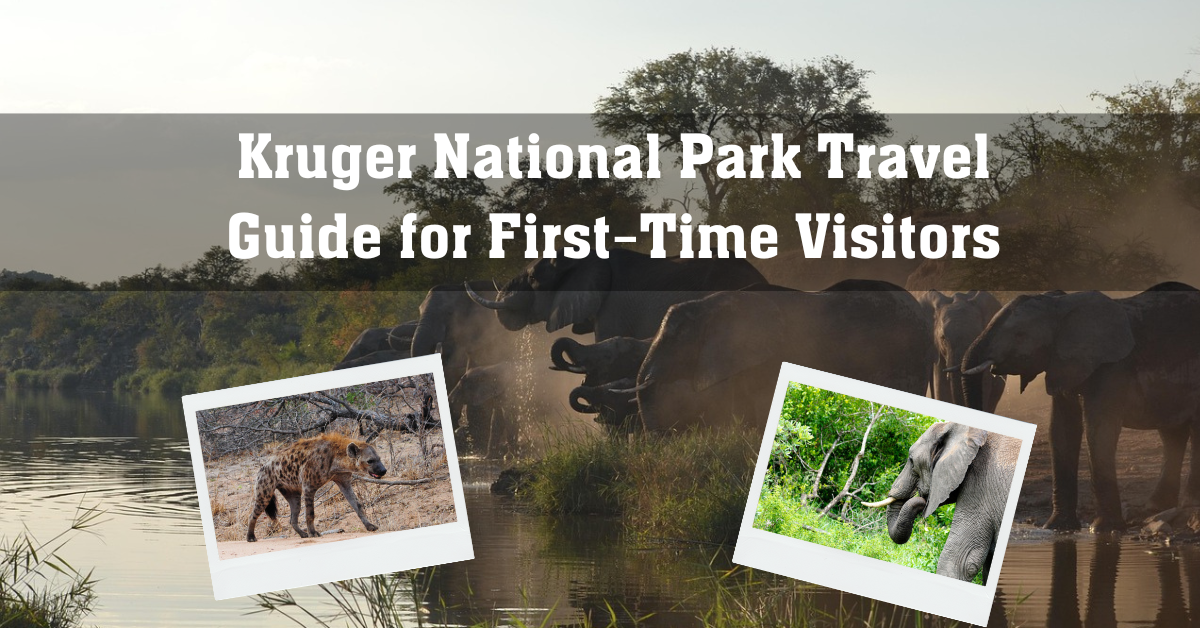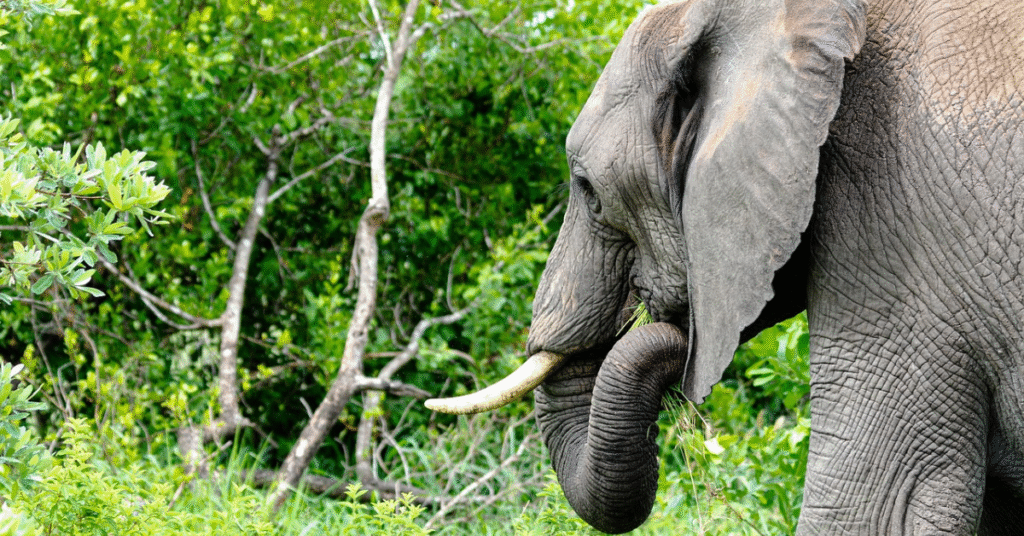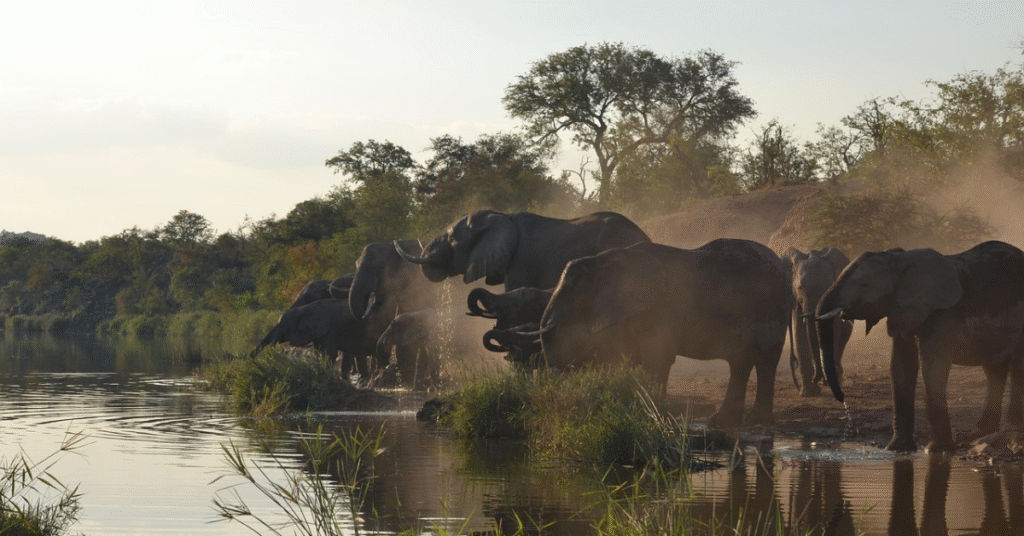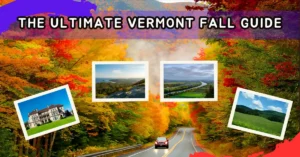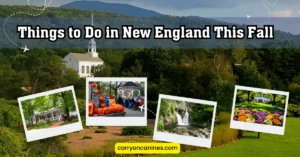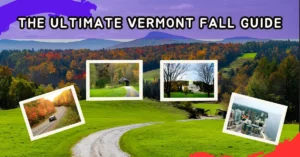The first time I entered Kruger National Park, I remember how quiet it felt. Not silence—but a kind of wild stillness filled with the distant trumpet of elephants, the buzz of cicadas, and the low rustle of wind brushing through mopane trees. That moment stayed with me. Kruger isn’t just a game reserve—it’s a living, breathing wilderness, teeming with life and layered with history.
Located in northeastern South Africa, Kruger is not only one of the continent’s largest national parks—it’s also one of the most accessible and diverse safari destinations in the world. Whether you’re a first-time visitor or a seasoned explorer, this park offers an unforgettable encounter with Africa’s iconic wildlife, dramatic landscapes, and deep-rooted cultural heritage.
What Makes Kruger Unique
Let’s start by clearing up a few key terms and concepts that will help you navigate Kruger better.
Definition List
- The Big Five
Lion, leopard, rhinoceros, elephant, and Cape buffalo—considered must-see animals on any safari. - SANParks
South African National Parks—manages the Kruger and all its camps, facilities, and conservation initiatives. - Rest Camps
Fully equipped accommodation areas inside the park with shops, restaurants, and fuel stations. - Bushveld
A mix of grasslands and shrublands typical of Kruger’s terrain. - Tropic of Capricorn
A geographic marker crossing the park’s northern region, influencing climate and vegetation.
How Big is Kruger and Where Should You Start?
Kruger National Park stretches approximately 350 km from north to south and 60 km east to west, covering over 19,400 square kilometers. That’s nearly the size of Slovenia or about two-thirds of Belgium.
But don’t make the mistake of thinking you can explore it all in one trip. I’ve done multiple self-drives and even a few guided trips, and here’s what I’ve learned: the southern region is denser with wildlife, while the northern region offers solitude, birdlife, and rare species.
Regional Breakdown of Kruger
| Region | Best For | Landscape Features | Highlights |
|---|---|---|---|
| Southern Kruger | First-time visitors, Big Five sightings | Lush, dense vegetation | Skukuza, Lower Sabie, Crocodile Bridge |
| Central Kruger | Balance of game and scenery | Open savannah | Satara, Tshokwane |
| Northern Kruger | Birding, solitude, rare antelope | Mopani woodland, baobabs | Punda Maria, Pafuri, Crook’s Corner |
Best Time to Visit Kruger National Park
One of the most common questions I get is, “When’s the best time to go?” I’ve visited during both the rainy and dry seasons, and each has its pros and trade-offs.
Seasonal Guide
| Season | Months | Pros | Cons |
|---|---|---|---|
| Dry Season | May – September | Easier wildlife viewing, cooler temperatures | Dusty roads, less green landscape |
| Wet Season | October – April | Lush scenery, baby animals, birdwatching | Harder to spot wildlife in thick vegetation |
Personally, I prefer early winter (May–June). You get crisp mornings, golden light for photography, and optimal game viewing near waterholes.
Where to Stay Inside the Park
If you want a truly immersive experience, stay inside Kruger at one of the many SANParks-managed rest camps or bush lodges. I’ve stayed at everything from rustic camps with no electricity to full-service chalets with air conditioning. Each one had its own charm.
Top Camps I Recommend
● Skukuza Rest Camp – The largest and most developed, with a museum, pool, and riverside bungalows.
● Lower Sabie – Ideal for sunset lovers; great river views and frequent leopard sightings.
● Satara – Known for predator activity, especially lion prides.
● Mopani – Quiet, mid-park camp overlooking Pioneer Dam.
● Punda Maria – Northernmost camp; cozy with abundant birdlife.
Camps can book out months in advance—especially during school holidays—so plan early.
Self-Drive or Guided Safari?
I’ve done both, and here’s the honest truth—each offers something unique.
Self-Drive
● ● Affordable and flexible
● ● Great for photographers
● ● Drive at your own pace
Guided Safari
● ● Expert trackers increase chance of rare sightings
● ● No stress about navigation or park rules
● ● Ideal for first-timers or birding enthusiasts
If you’re new to safaris, I suggest combining both: book a morning or sunset game drive from your camp, and then explore on your own during the day.
Discover the Northern Secrets of Kruger
Many first-time visitors focus solely on the southern region—and I get it. The Big Five are easier to spot there. But if you’re after solitude, rare species, and ancient landscapes, the northern region of Kruger will absolutely steal your heart.
On one of my longer road trips, I entered through Pafuri Gate, the northernmost entrance, and slowly made my way southward. The entire journey felt like uncovering a hidden Africa—untouched, mysterious, and breathtaking.
Crook’s Corner and the Land of Outlaws
Located at the northeastern tip of the park, Crook’s Corner is where South Africa, Zimbabwe, and Mozambique meet. As the name suggests, it has a colorful (and criminal) past.
● In the early 1900s, poachers, ivory smugglers, and fugitives used this triangle of no-man’s-land to escape prosecution.
● By simply stepping across the border—or standing on the actual boundary beacon—they could avoid the law of any one country.
● Today, instead of outlaws, you’ll find hippos, crocodiles, and some of the most scenic views in all of Kruger.
Surrounded by massive baobab trees, lush riverbanks, and dense fig groves, this area is also a magnet for birdwatchers. It’s not uncommon to see kingfishers, hornbills, or even the elusive Pel’s Fishing Owl if you’re lucky.
Tip: Arrive early morning or late afternoon for soft light and increased wildlife activity.
Punda Maria Camp – History Meets Wildlife
This was one of the coziest stays I’ve had in Kruger. Punda Maria is a smaller, older camp tucked into the park’s far north. Some of the original 1930s huts are still in use today, adding to the vintage safari feel.
But what truly sets this camp apart?
● A floodlit waterhole inside the camp boundary
● A shaded wooden hide perfect for watching animals day and night
● Frequent sightings of buffalo, nyala, giraffes, and large elephant herds
I once sat there for two hours in absolute silence, watching a breeding herd of elephants file in to drink. Calves splashed in the mud while the matriarch kept a watchful eye. No car needed. No road dust. Just me and the bush.
Tsendze Rustic Campsite – For True Wilderness Lovers
South of Mopani Camp lies Tsendze, a no-frills campsite that redefines “off-grid.” There’s no electricity, no Wi-Fi, and no gate guards. You unlock the entrance yourself—and lock it behind you.
But what you get in return is pure, immersive wilderness.
● Campsites line the fence, and it’s not uncommon to hear lions roaring at night.
● There’s a gas-powered fridge for perishables and solar lights in the ablutions.
● The open-air showers allow you to stargaze while washing off the safari dust.
I met fellow campers who’d been returning to Tsendze for over a decade. It’s not luxury, but it’s authentic. It’s bush TV around the fire, and the sounds of hyenas and owls replacing your evening playlist.
Rare Sightings in the North
During my drive through the northern section, I was stunned by the biodiversity. While the Big Five are scarcer here, you’re more likely to encounter species you won’t see down south.
Wildlife Highlights
| Species | Where I Saw It | Rarity | Notes |
|---|---|---|---|
| Nyala | North of Punda Maria | Common (North) | Elegant antelope, not seen in southern Kruger |
| Roan Antelope | Near Babalala Picnic Spot | Very Rare | Only ~90 in park; I spotted 5 together |
| Sharpe’s Grysbok | Between Pafuri and Shingwedzi | Rare | Tiny, shy antelope |
| Cape Parrot | Luvuvhu River area | Uncommon | Vivid plumage, active in early morning |
| Bateleur Eagle | Throughout the north | Common | Iconic broad-winged raptor |
Birders, take note: The north offers some of the best birdwatching in all of Africa—especially during the summer months when migratory species arrive.
Bring binoculars and a bird book. You’ll thank yourself later.
Shingwedzi Rest Camp – The River’s Rhythm
When I arrived at Shingwedzi, I was greeted by the soft colors of dusk and the calls of hadedas echoing through the trees. Set along the Shingwedzi River, this camp quickly became one of my favorites.
● The camp restaurant overlooks the river, making every meal a game-viewing experience.
● There’s a sparkling pool (one of the cleanest in the park!)—perfect for hot afternoons.
● Elephants, buffalo, and even the occasional lion pass close to the perimeter fence.
Evenings here are best spent with a drink in hand, watching the golden sun dip behind the mopani canopy, casting long shadows across the riverbanks.
One-Day Kruger Itinerary for Self-Drive Visitors
Planning a full-day drive in Kruger National Park? This sample itinerary reflects what I personally followed on my most rewarding day in the park.
Self-Drive Itinerary – Southern Kruger Focus
| Time | Activity | Notes |
|---|---|---|
| 5:30 AM | Gate Entry at Crocodile Bridge or Malelane | Get a head start; gates open at sunrise |
| 6:30 AM | Sunrise drive along the S25 River Road | Excellent for leopard and rhino sightings |
| 8:00 AM | Breakfast stop at Lower Sabie Rest Camp | Fuel up and enjoy the Sabie River view |
| 9:30 AM | Drive north toward Satara (via H10/H1-2) | High predator density area |
| 12:00 PM | Picnic at Tshokwane Picnic Site | Clean restrooms, shaded tables, and birdlife |
| 1:30 PM | Explore smaller loops around Satara | Good for giraffes, lions, vultures |
| 3:00 PM | Begin return toward entry gate | Use a different route for varied sightings |
| 5:30 PM | Exit park before gate closes | Allow buffer for last sightings and traffic |
Tip: Always carry your day pass, a full tank of fuel, and a charged camera battery.
Insider Tips for a Better Safari Experience
Over the years, I’ve gathered a few golden rules for making the most out of any Kruger visit:
● ● Don’t rush. Quality over quantity—linger at waterholes and let the bush reveal itself.
● ● Pack a cooler. Drinks, fruit, and sandwiches make all the difference on long days.
● ● Window cloths are essential. Dust builds fast; keep your view clean.
● ● Binoculars aren’t optional. You’ll miss half the action without them.
● ● Respect wildlife. Stay in your vehicle and maintain silence near sightings.
Common Questions About Kruger National Park
Do I need a 4×4 to visit Kruger?
No. Most roads are tarred or well-graded gravel. A regular sedan works perfectly for self-drives.
Is it safe to drive alone?
Yes. The park is well-signposted, and traffic rules are strictly enforced. Just stick to the speed limit (max 50km/h on tar, 40km/h on gravel).
Can I visit without staying overnight?
Absolutely. Day visitors are welcome. Just be sure to check gate opening and closing times based on the season.
Are there malaria risks in Kruger?
Yes, especially during the summer rainy season (Oct–Mar). Consult your doctor about prophylactics and use insect repellent.
Can I see the Big Five in one day?
It’s possible, especially in the south, but not guaranteed. The experience is about more than a checklist—focus on the overall richness.
Final Thoughts on Kruger National Park
Kruger isn’t just a destination—it’s an experience that taps into something deep and ancient within us. Every time I’ve visited, I’ve left feeling humbled, grounded, and strangely reconnected to the world. The roar of a distant lion, the dust kicked up by a buffalo herd, the stillness of a baobab at dusk—these are memories that stay with you.
Whether you’re camping under the stars at Tsendze or sipping coffee on a chalet porch in Lower Sabie, the magic of Kruger lies in its rhythm. It invites you to slow down, listen, and simply be present in the wild.
If you’re ready for raw beauty, genuine encounters with nature, and the kind of silence that speaks volumes—Kruger is waiting.

